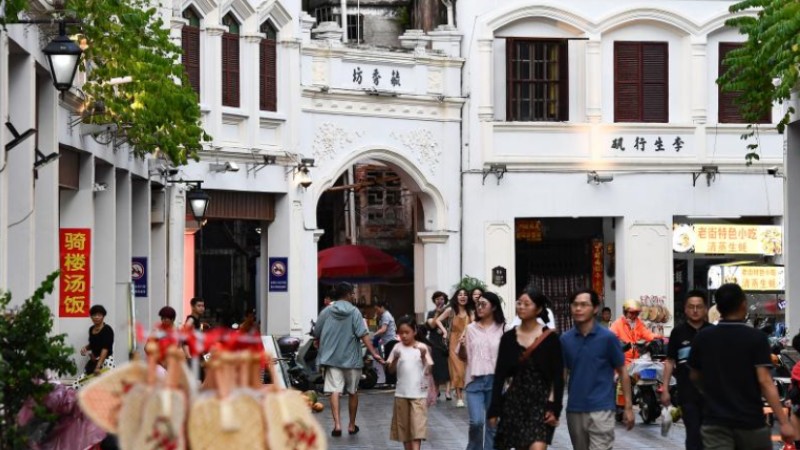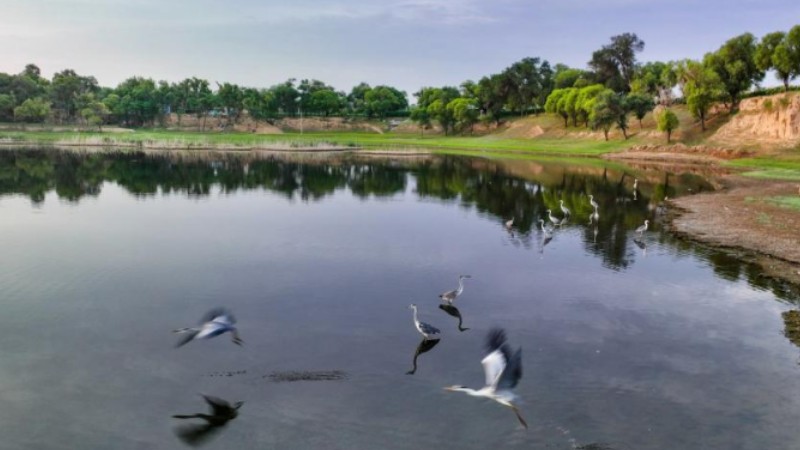Advanced tech boosts water efficiency in Yellow River irrigation area
HOHHOT, Aug. 29 (Xinhua) -- Crops such as wheat, corn as well as sunflower seeds and melons stand on the cusp of harvest in Hetao Irrigation Area, a site located in north China's Inner Mongolia Autonomous Region that is inscribed on the list of World Heritage Irrigation Structures.
An Lingyi's maize field, spanning 1,000 mu (66.7 hectares), is commanding attention for its cutting-edge approach to pre-harvest preparations. The use of shallow-buried drip irrigation system has not only spared the farmer from the laborious tasks of irrigation and fertigation but also holds the promise of yielding abundant output.
"The technology saves about 40 percent of irrigation water and 40 percent of fertilizer while helping increase the per-mu yield by about 10 percent," An said.
The Linhe District in Inner Mongolia's Bayannur city is a major grain-producing area. Covering an irrigation area of approximately 2 million mu, it draws its water from the Yellow River.
This year, the district has vigorously promoted drip irrigation technology, with added support through the intelligent agricultural system integrated with China's homegrown BeiDou Navigation Satellite System (BDS) services.
The Hetao Irrigation Area, located in Bayannur, has been diverting water from the Yellow River for irrigate since the Qin Dynasty (221 B.C.-206 B.C.). The current irrigation area stands at 11.54 million mu.
The 2,200-year-old irrigation project, included in the World Heritage Irrigation Structures in 2019, uses gravity to transport the Yellow River water into fields.
The Yellow River, China's second-longest, stretches over 840 km in Inner Mongolia, home to several deserts. The Hetao section of the river is 333.5 km long, adjacent to the Ulan Buh Desert, Mu Us Desert and Kubuqi Desert.
The irrigation area collects about 4.6 billion cubic meters of water from the Yellow River every year, accounting for one-eighth of the total water diversion in the entire Yellow River basin.
As one of China's most important grain and oil production bases, this area has yielded over 3 billion kg of grain on average annually in recent years.
According to Wang Xiaojun, director of Bayannur's water resources bureau, conventional flood-inducing irrigation methods lack water efficiency.
While maintaining the utilization of existing irrigation channels, the drip irrigation network involves raising water pressure at pumping stations, alongside building water pipelines to channel water into the fields, effectively addressing both irrigation and fertigation needs, Wang said.
"Drip irrigation substantially enhances the efficiency of irrigation water and fertilizer utilization, and this technology holds the potential to play an important role in advancing water-saving agricultural practices and improving the overall agroecological environment," he said.
Bian Junfeng, a cadre of Heping Village in Bayannur, said that compared with traditional flood irrigation methods, drip irrigation is more water-efficient and can help increase the average per-mu income by approximately 500 yuan (about 68.4 U.S. dollars).
Currently, the drip irrigation network has been laid for nourishing 863,000 mu of fields in the Hetao Irrigation Area.
Photos
Related Stories
Copyright © 2023 People's Daily Online. All Rights Reserved.









